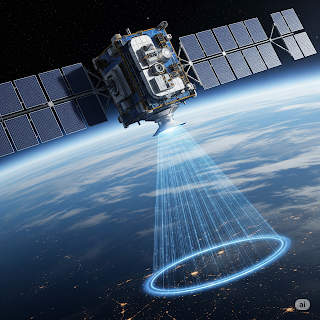A New Frontier in Renewable Energy
Japan is pioneering a transformative approach to renewable energy by developing space-based solar power systems (SSPS) that utilize microwave beams to transmit energy from space to Earth. This innovative technology aims to overcome the limitations of traditional photovoltaics, offering a stable and continuous power supply regardless of weather conditions or time of day. kenkai.jaxa.jp
The Concept of Space-Based Solar Power
What is SSPS?
Space-Based Solar Power Systems involve placing solar panels in geostationary orbit to collect solar energy, which is then converted into microwaves and beamed down to Earth. This method ensures a consistent energy supply, as space-based panels can capture solar energy 24/7 without atmospheric interference.
Advantages Over Traditional Photovoltaics
-
Continuous Energy Supply: Unlike ground-based solar panels, SSPS can provide uninterrupted power.
-
Weather Independence: Microwave transmission is unaffected by cloud cover or rain.
-
High Energy Efficiency: Solar irradiance in space is approximately 40% stronger than on Earth.
Japan's Pioneering Efforts
Historical Milestones
Japan has been at the forefront of SSPS research since the 1980s. In 2015, the Japan Aerospace Exploration Agency (JAXA) successfully transmitted 1.8 kilowatts of power over a distance of 55 meters using microwave technology.
Recent Developments
In December 2024, Japanese researchers achieved a significant milestone by successfully transmitting microwaves from a flying aircraft to ground-based receivers. This test is a crucial step toward the planned demonstration of space-to-Earth power transmission using small satellites in 2025.
Technical Challenges and Innovations
Precision in Microwave Transmission
Transmitting microwaves from 36,000 kilometers above Earth requires extreme precision. JAXA is developing high-accuracy beam-pointing-control technology to ensure that the energy beams accurately target ground-based receivers.
Construction of Large-Scale Structures in Space
Building kilometer-scale solar collectors in space necessitates advanced robotic assembly technologies. JAXA is researching robotic systems capable of assembling large structures in orbit to facilitate the deployment of SSPS.
Environmental and Safety Considerations
Safety of Microwave Beams
Concerns about the safety of microwave beams are addressed by ensuring that the power density of the beams is comparable to sunlight, posing no harm to humans, animals, or aircraft.
Environmental Impact
SSPS offers a clean energy solution with zero carbon emissions, contributing to global efforts to combat climate change. The ability to direct energy beams to specific locations also provides a reliable power source for disaster relief and remote areas.
Global Implications and Future Prospects
Japan's Strategic Position
By advancing SSPS technology, Japan positions itself as a leader in renewable energy innovation. Demonstrating this technology ahead of other nations could offer Japan a strategic advantage in space development collaborations.
Timeline for Implementation
Japan aims to conduct a space-based demonstration of SSPS technology by 2025, with the goal of achieving practical use by the 2030s. This ambitious timeline reflects Japan's commitment to addressing energy challenges through innovative solutions. Global Construction Review
Conclusion: Embracing the Future of Energy
Japan's exploration of space-based solar power represents a significant leap toward sustainable and reliable energy solutions. By harnessing the power of the sun from space and transmitting it via microwave beams, Japan is paving the way for a future where clean energy is accessible anytime, anywhere.


No comments:
Post a Comment